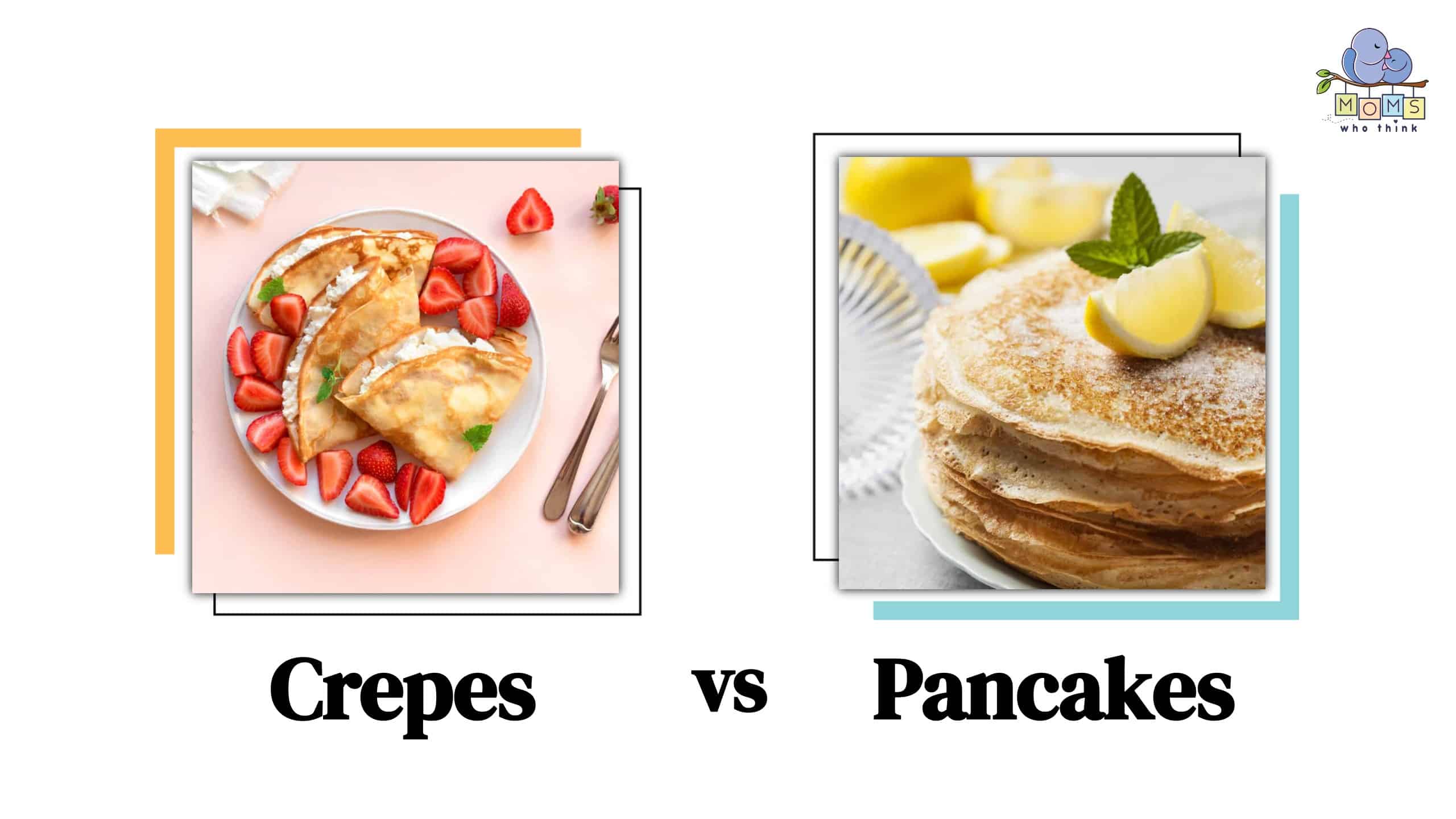Crepe vs. pancake, which one would you choose? Explore the exciting debate of these two delicious breakfast dishes, and discover what sets them apart. The key difference between the two is that crepes are significantly thinner than a pancake, but there are many other aspects that make both dishes unique.
In this article, we will explore the differences between crepes and pancakes, including their texture, cooking methods, and fillings. So, whether you prefer the delicate crepe or fluffy pancake, get ready to unravel the differences and join the crepe vs. pancake debate!
Crepe vs. Pancake: What are the Differences?
There are many differences between these two mouthwatering breakfast dishes, but the key difference is the texture between the two. So, let’s go into more detail on what exactly sets these two apart.
- Texture: Crepes are thin and delicate, while pancakes are soft and fluffy.
- Ingredients: Crepes and pancakes both have similar ingredients, but crepe batter consists of butter or oil to create a crispy texture, while pancakes consist of baking powder or baking soda to create a fluffy texture.
- Fillings: You can use the same fillings for crepes and pancakes, but the fillings for crepes are often rolled into the crepe. Pancakes are solid and topped with fillings.
- Cooking Methods: You cook crepes at a lower temperature for a shorter amount of time because they are thin, whereas pancakes are cooked for a longer period at a higher temperature.
- Thickness: Crepes are much thinner than pancakes, they are almost paper-thin, and pancakes are much thicker.
Crepe vs. Pancake: Nutritional Value
Crepes and pancakes offer different nutritional profiles. While both are rich in carbohydrates because of their flour-based batter, crepes are lower in calories and fat compared to pancakes. Additionally, the nutritional value can vary based on the ingredients and fillings used, so it's important to consider portion sizes and choices of toppings for a well-balanced meal.
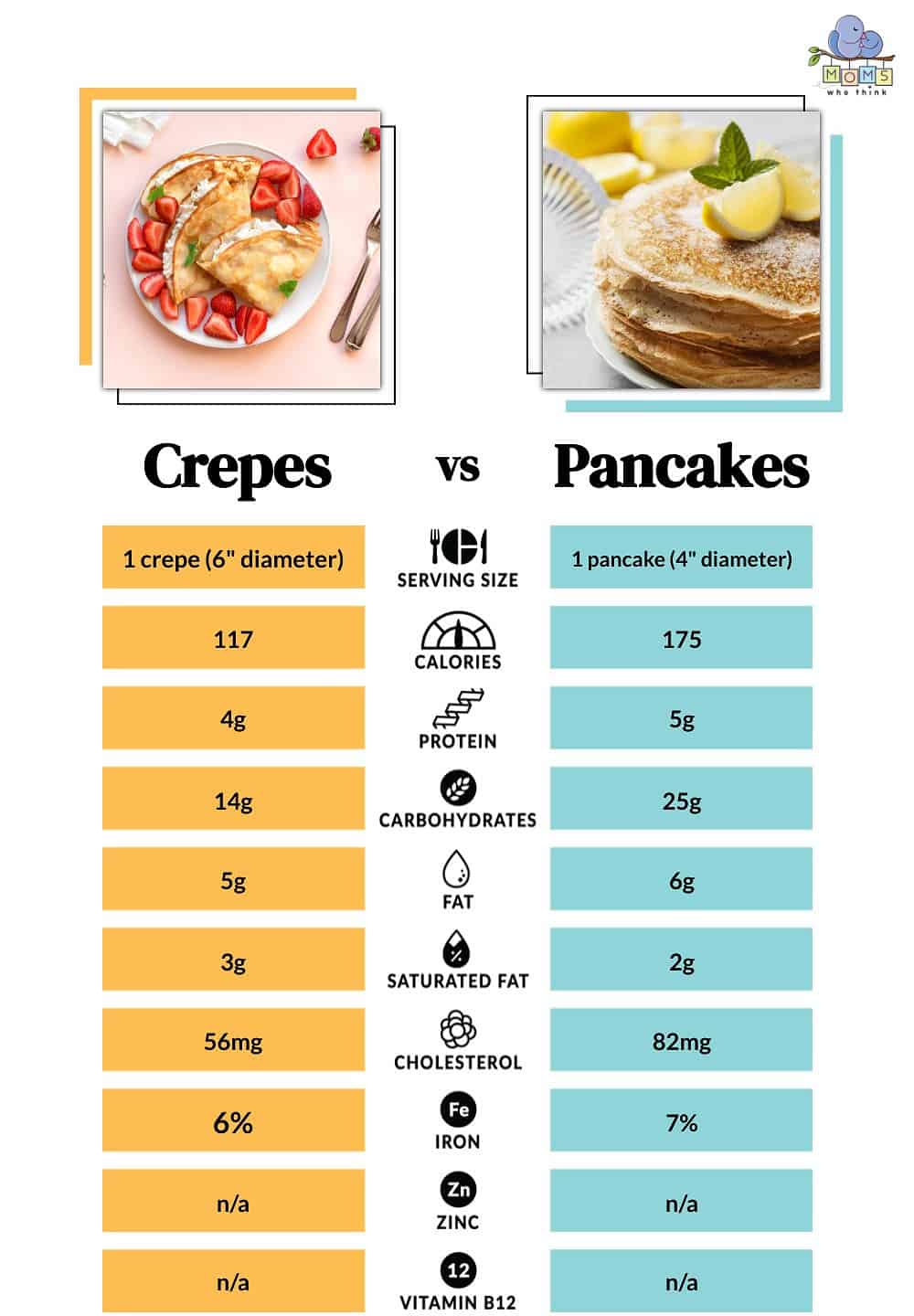
©
Are Crepes and Pancakes the Same Thing?
While crepes and pancakes share similarities, they are not the same thing. In terms of looks and texture, crepes are thin, delicate, and crispy, while pancakes are thick and fluffy. However, both breakfast dishes taste delicious, and you can enjoy them with many different toppings.
What is a Crepe?
A crepe is a very thin pancake made from many ingredients, such as flour, milk, water, salt, sugar, eggs, and butter, depending on if you want a sweet or savory crepe. To make a crepe properly, whisk the batter until it's smooth, then quickly cook both sides on a hot griddle or skillet. This will result in a thin and delicate crepe with a crispy texture that you can fill with a variety of ingredients.
What Kind of Fillings Can Go in a Crepe?
Whether you want a sweet or savory dish, crepes are a great option. You can fill crepes with many ingredients, creating a flavorful experience for your tastebuds. Here are some popular options for sweet and savory, giving you an endless number of combinations to explore and satisfy your cravings.
Sweet fillings:
- Chopped nuts
- Carmel
- Fruit jams
- Fresh fruit
- Nutella
Savory fillings:
- Shredded chicken
- Chopped meat
- Salmon
- Scrambled eggs
- Vegetables
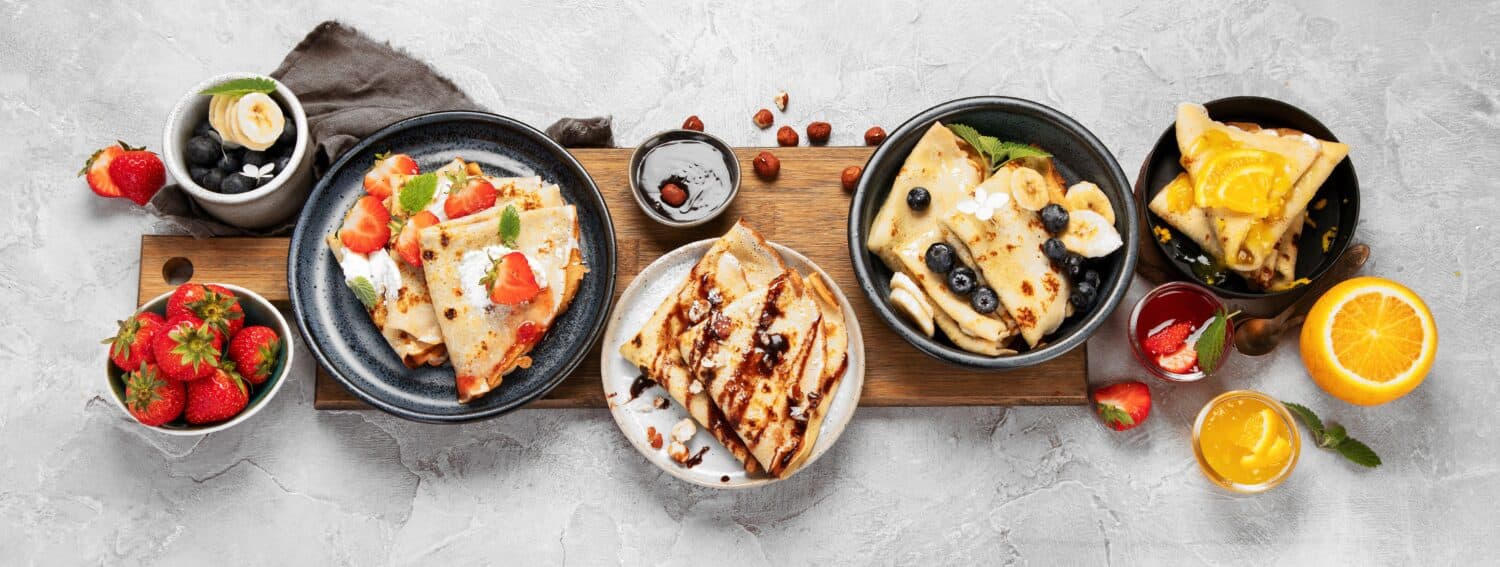
©Tatjana Baibakova/Shutterstock.com
What is a Pancake?
Pancakes are known by many different names, including hotcake or flapjack. They are sweet, round, fluffy breakfast dishes. Pancake batter is made of flour, eggs, baking powder, eggs, and sugar. These ingredients are mixed together to create a smooth batter, then cooked on one side until little bubbles form in the batter, indicating that it needs to be flipped to the other side.
What Kind of Fillings Can Go in a Pancake?
One of the best things about pancakes is that you can make pancakes with many different fillings and toppings, allowing you to create the perfect breakfast dish to please anyone’s tastebuds. You can let your imagination run wild while you experiment with different fillings, giving your pancakes a burst of flavor.
Here are some popular options to try:
- Fresh fruit
- Fruit jams
- Chocolate spread
- Chocolate chips
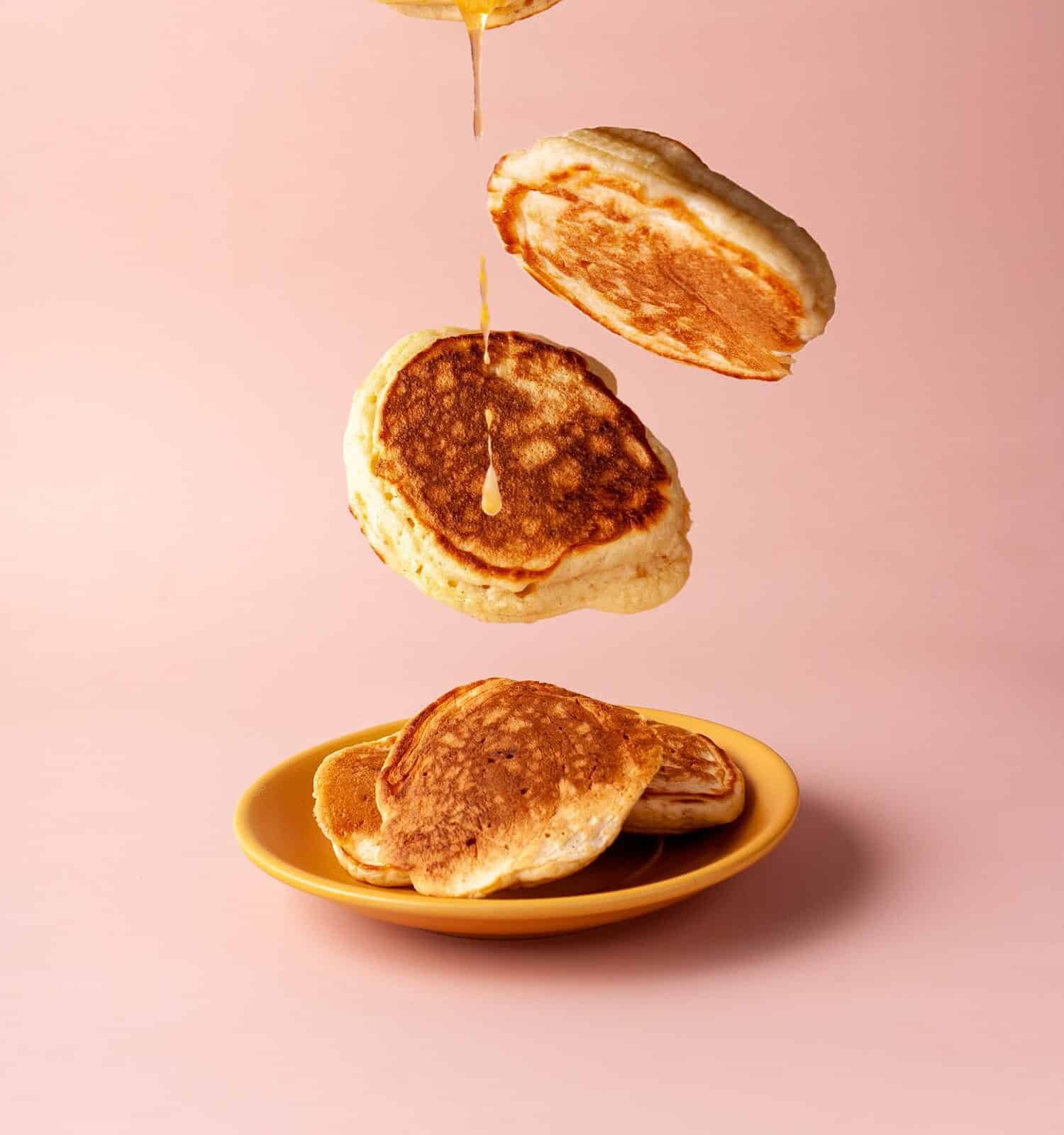
©RaraAvisPhoto/Shutterstock.com
Pancake Recipes
Print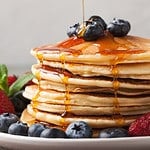
Perfect Fluffy Buttermilk Pancakes
- Yield: Makes 6–8 servings 1x
Ingredients
3 cups buttermilk
2 teaspoons vanilla extract
4 cups all-purpose flour
1/2 cup white sugar
1 Tablespoon plus 1 teaspoon baking powder
2 teaspoons baking soda
1 1/2 teaspoons salt
4 eggs
1/2 cup butter, melted
Instructions
1. Add vanilla extract to the buttermilk in a medium bowl and set aside.
2. Combine flour, sugar, baking powder, baking soda, and salt in a large mixing bowl.
3. Whisk egg and butter into the vanilla buttermilk.
4. Pour the flour mixture into the wet ingredients and whisk until lumps are gone. Mix just enough to incorporate all the ingredients. Do not over-mix, it will make the pancakes tougher and much less fluffy.
5. Let this mixture rest for 15 minutes (see the Tip below for why). Do NOT stir as it rests, or after it is done resting. The batter will be thick. Trust us on this, by following this rule we've had consistently fluffy, delicious pancakes every time!
6. Heat a large skillet over medium heat, and coat well with cooking spray.
7. Pour 1/4 cupfuls of batter onto the skillet, and cook until bubbles appear on the surface.
8. Flip with a spatula, and cook until browned on the other side.
Notes
You can add blueberries or chocolate chips to the batter, add to the dry ingredients before combining with the buttermilk mixture.
- Cinnamon Apple Pancake Dippers Recipe
- Baked Apple Pancake Breakfast Recipe
- Pancakes in Every Flavor
- Weekend Pancake Day
Final Thoughts
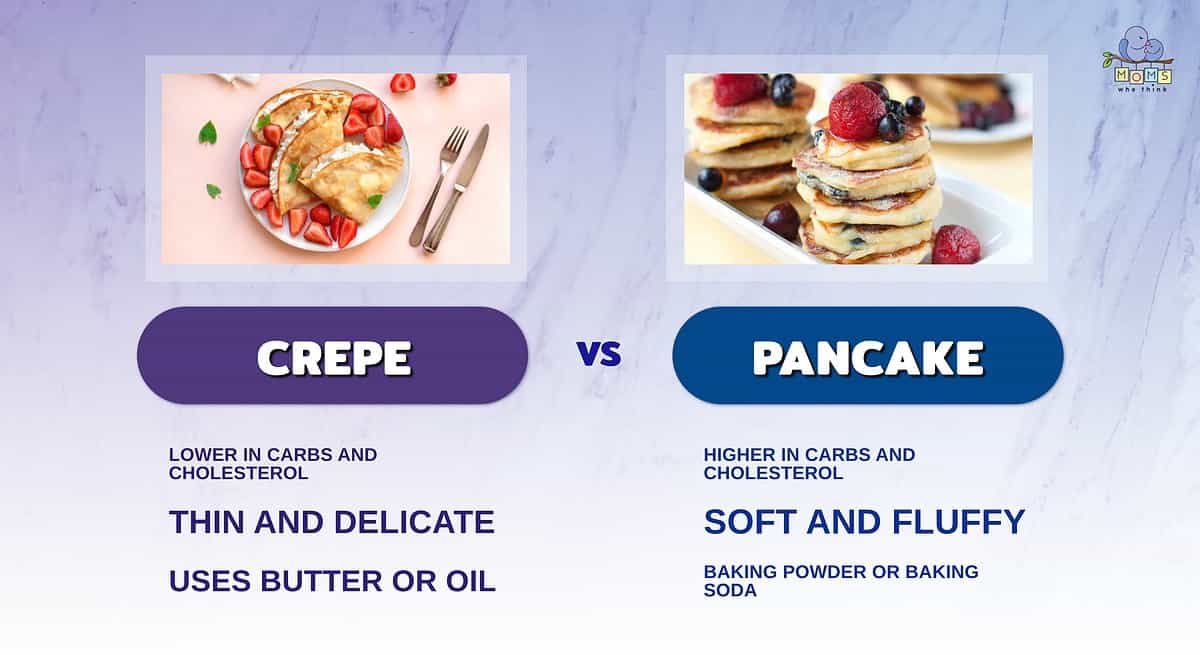
- Crepes are lower in carbs and cholesterol compared to pancakes, making them a potentially better choice for those trying to cut weight, or who have been told to watch their carb or cholesterol intake.
- Pancakes are known for their soft fluffiness, while crepes are thin, light, and delicate. Crepes are often wrapped around fillings to take advantage of their thinness.
- Crepes use butter or oil as a signature part of their recipe, while pancakes make use of baking powder or baking soda to achieve their signature fluffiness.
The key differences between crepes and pancakes lie in their texture, ingredients, and cooking methods. Crepes are known for their thin and delicate nature, achieved by cooking them at a lower temperature for a shorter time. On the other hand, pancakes are distinguished by their fluffiness, achieved by using baking powder or baking soda in the batter and cooking them at a higher temperature for a longer period. These differences make the crepe vs. pancake debate an exciting exploration of flavors and culinary preferences.
